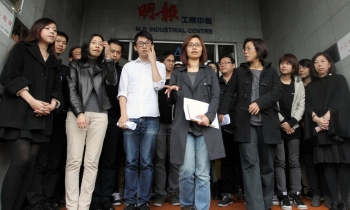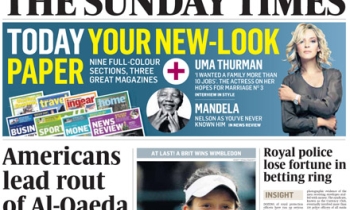The Telecom Regulatory Authority of India (TRAI) wants the Broadcast Audience Research Council to start its audience measurement activities by January next year with representatives from the government, says a report in the Hindu Businessline.
The Authority is also seeking regulation over content. “With increased convergence and the blurring of boundaries between carriage and content, the recent observations of the honourable Supreme Court on the role of media and the significant influence exercised by content on the society, the Authority strongly recommends that regulation of content should also be transferred to TRAI,” says an official release.
Although “government intervention in the form of an enactment” hasn’t been recommended, TRAI would nonetheless like government representation on the board of the industry body comprising broadcasters, advertisers and agencies.
That has the industry concerned. “How can you say that television audience measurement should be self-regulatory and simultaneously have the government involved,” asks one broadcaster, not willing to be named.
TV audience measurement ratings, used by the industry to decide advertising rates for TV programmes, are currently offered by two private players — TAM Media research and Audience Measurement and Analytics (aMap).
“It is a first step in the right direction. The rating business should not be a monopoly of a single agency and an open bid process recommended by TRAI is welcome. However, the January deadline may be a little too tight,” said Mr Amit Varma, CEO, aMap. TAM Media research declined to comment.
TRAI, in its recommendations on ‘Policy Guidelines and Operational Issues for Television Audience Measurement or Television Rating Points (TRPs)’, has asked the council to commission the exercises but not conduct them. It has asked for the process to be opened to bids but suggests that the Ministry of Information and Broadcasting provide the key eligibility norms for the selection of rating agencies and their performance obligation norms for the participating agencies.
What’s at stake, says TRAI, is the Rs 8,000 crore of advertising revenue earned by the Rs 22,600-crore television industry in India. The network of the current people meter, according to TRAI, and the Ministry, is not wide enough. TAM’s 7,000-8,000 people meters’ network cover only towns with more than 1 lakh people, and doesn’t cover Jammu and Kashmir, Bihar, Jharkhand and the North-Eastern States.
The sample size will have to cover all geographies and platforms and include terrestrial homes that show Doordarshan’s channels primarily. But since the cost is to be born by all stakeholders equally, broadcasters with pay channels are asking why they must pay for a platform, or terrestrial, that they are not available on.
Commenting on TRAI’s final recommendations on TV audience measurement, Star India said, “TRAI’s endorsement of a self regulatory model is most welcome and vindicates the tri-partite model of the Broadcast Audience Research Council that Star has supported from the outset. There are, however, some concerns on Government involvement and these have previously been shared with TRAI during the consultation stage. All stakeholders should continue to remain mutually engaged to ensure that the solution that finally emerges gives a fillip to self-regulated TV Audience Measurement.”









